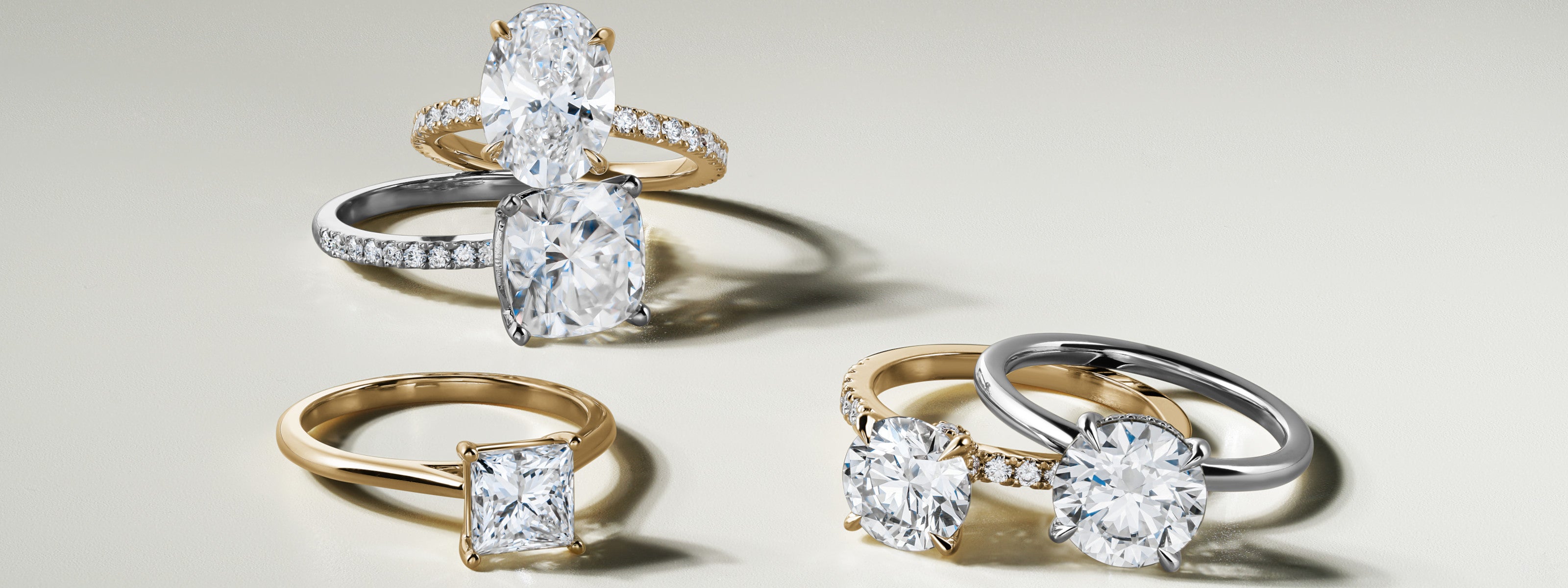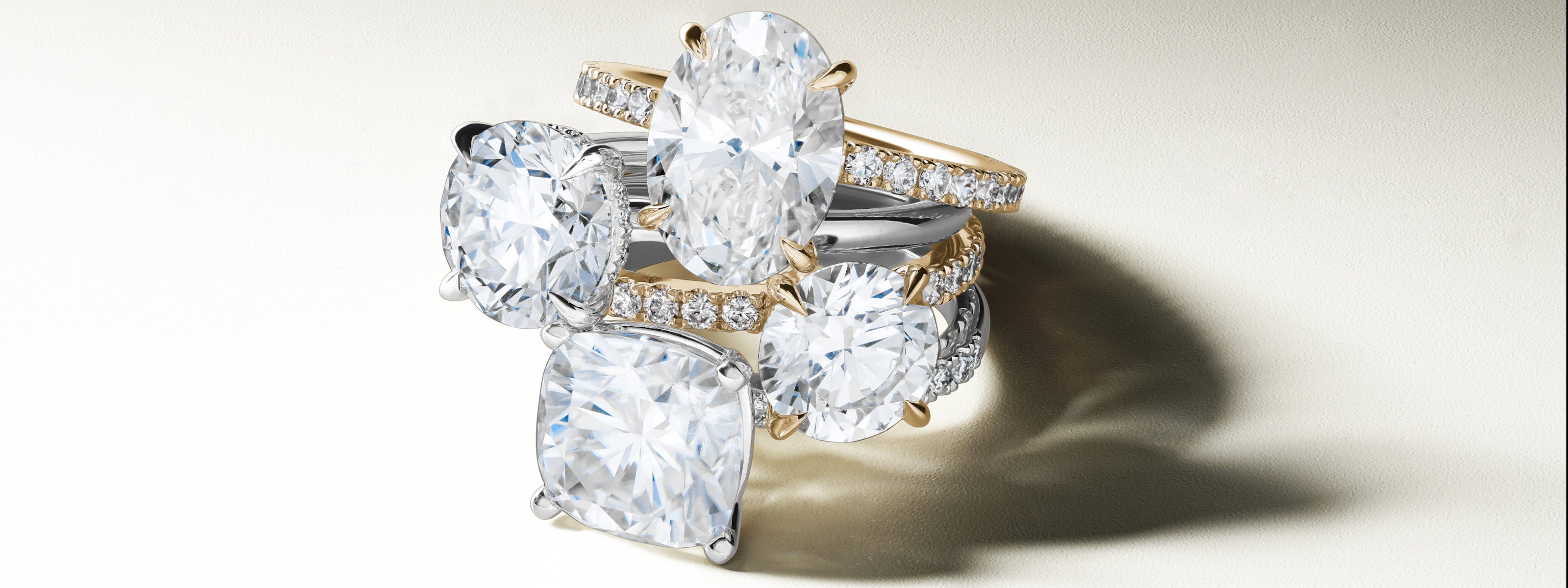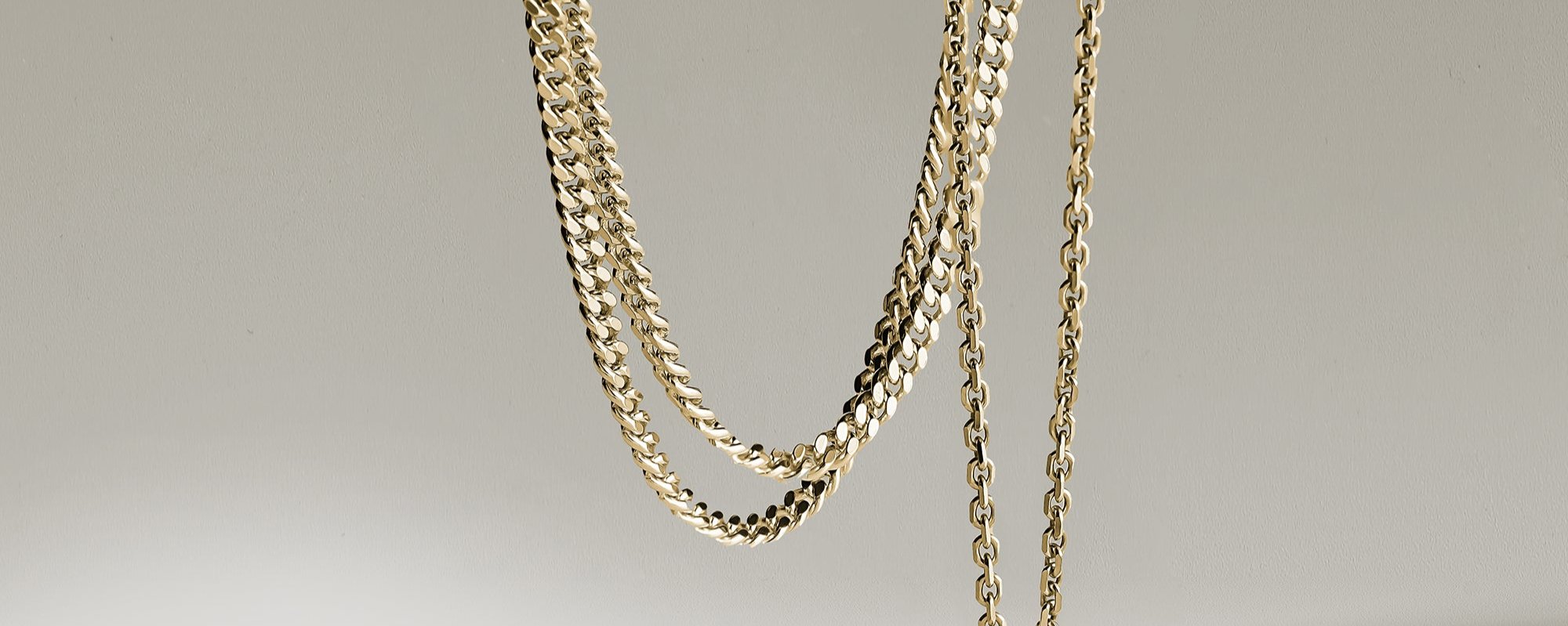
Everything You Need to Know About Diamonds

Everything You Need to Know About Diamonds: The 5 C's
Diamonds, revered for their brilliance and enduring beauty, are graded and valued based on five key characteristics known as the 5 C’s: Cut, Colour, Clarity, Carat Weight, and Certification. These criteria not only determine a diamond's rarity and value but also guide consumers in making informed choices when purchasing these precious gems.
Navigating the intricate world of diamonds can be overwhelming, especially with the specialized terminology. At Ex Aurum Jewellers, we aim to help simplify and guide you through the process. We breakdown the 5 C’s so each client can understand how to choose the perfect diamond and become an expert. Let's begin by examining a chart from the Gemological Institute of America (GIA).

Cut
The cut of a diamond refers to its proportions, symmetry, and polish, rather than its shape (like round, princess, or oval). A well-cut diamond reflects light internally and disperses it through its crown, creating sparkle and brilliance. The precision of the cut affects how effectively light is reflected back to the viewer's eye, making it crucial in maximizing a diamond's beauty.
- Grading: Cut is graded from Excellent to Poor based on criteria like brightness, fire (dispersion of light into colors of the spectrum), and scintillation (sparkle).
A well-cut diamond ensures optimal symmetry, minimal inclusions, and a brilliant sparkle. At Ex Aurum Jewellers, we pride ourselves on offering only Excellent cut diamonds.
Hot Tip: When comparing two diamonds with the same specifications, an Excellent cut will outshine a Good cut, emphasizing the importance of this feature.

Colour
Diamonds come in a spectrum of colours, from colorless to light yellow or brown, with the most valuable being colourless. The colour grade evaluates how much colour is present in a diamond, with the rarest and most valuable diamonds having no detectable color.
- Grading: The color scale ranges from D (colourless) to Z (fancy yellow), with subtle differences between each grade impacting the diamond's value.
Your choice of color should reflect personal preference and desired aesthetics. For instance, those who prefer a white gold setting might opt for diamonds in the D-G range, ensuring a bright, white appearance.
Hot Tip: To check for a yellow hue, place the diamond on a white piece of paper, flip it top-down, and examine it under light. This method helps determine whether your diamond is ultra-white or has a slightly yellow tint.
Fancy yellow diamonds, falling in the J-Z range, are increasingly popular for their unique and vibrant color.
At Ex Aurum Jewellers, we have the ability to source the perfect diamond for every client. Colour is just one of the characteristics that are most commonly discussed.

Clarity
Clarity refers to the presence of internal and external flaws (inclusions and blemishes) in a diamond. These naturally occurring characteristics are evaluated under 10x magnification to determine the clarity grade.
- Grading: Clarity grades range from Flawless (no inclusions or blemishes visible under 10x magnification) to Included (inclusions visible to the naked eye).
Diamond clarity ranges from Flawless all the way to I3. When are refer to Clarity, this refers to the presence of inclusions or imperfections within the diamond, which can vary in size and visibility. Most inclusions are not visible to the naked eye and are documented on certificates from GIA, IGI, or HRD. There are different types of inclusions, for example, some are crystals, clouds, black dots, feathers and twinning wisps.
Now, let’s look more in-depth at the hierarchical scale:
Flawless (FL) and Internally Flawless (IF): No inclusions, resulting in exceptional sparkle.
VVS1-VVS2 (Very Very Slightly Included): Inclusions are difficult to see, even under magnification.
VS1-VS2 (Very Slightly Included): Minor inclusions that are not visible to the naked eye.
SI1-SI2 (Slightly Included): Inclusions may be noticeable but can often be hidden under the girdle.
Hot tip: At Ex Aurum Jewellers, we source only eye-clean diamonds, ensuring that inclusions are not visible to the naked eye or are cleverly concealed.
Carat Weight
The carat weight of a diamond measures its size and is often misunderstood as a measure of its quality. Carat weight focuses on how much the diamond weighs, some diamonds can look larger than their weight, if they are longer on the surface then depth wise.
- Grading: Diamonds are categorized into carat weight ranges (e.g., 0.50-0.69 carats, 1.00-1.49 carats), with larger diamonds generally being rarer and more valuable.
Certification
Diamonds are typically accompanied by a certification from an independent gemological laboratory, verifying the diamond's characteristics (cut, color, clarity, carat weight) and confirming it has not been treated to enhance its appearance.
- Grading Labs: Trusted gemological laboratories such as GIA (Gemological Institute of America), AGS (American Gem Society), and IGI (International Gemological Institute) provide reliable diamond certifications.
Conclusion
Mastering the 5 C’s empowers you to appreciate the complexities and beauty of diamonds beyond their sparkle. When purchasing a diamond, knowing how cut, color, clarity, carat weight, and certification influence a diamond's value ensures you make a choice that resonates with both aesthetics, preferences and budget. By doing thorough research and considering these essential factors, you can find the ideal diamond that balances all specifications.
At Ex Aurum Jewellers, we are committed to providing the highest quality diamonds, ensuring your selection process is seamless and rewarding. Embrace the journey of discovering these precious stones and celebrate their enduring allure.
We look forward to helping you select the perfect diamond.



